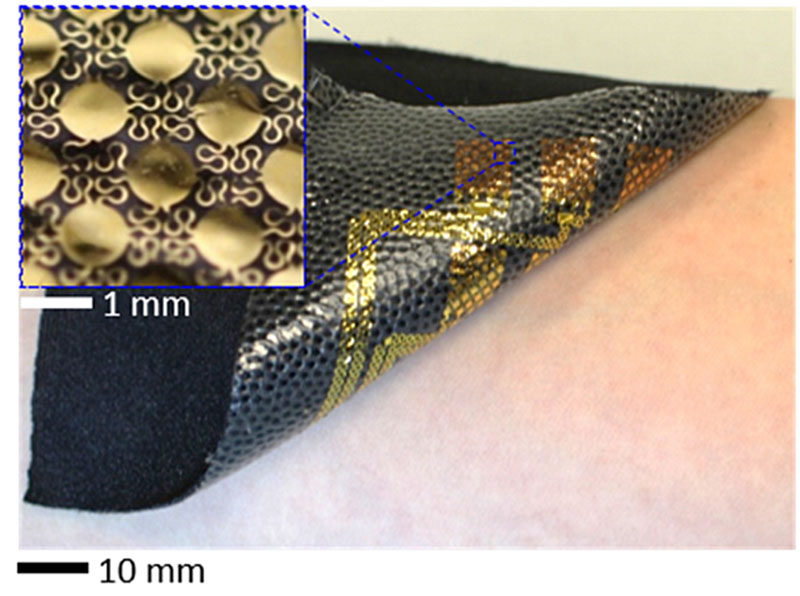Patients with mobility disorders related to spinal nerve compression or those recovering from spinal cord injuries are frequently treated by the conditioning of the Hoffmann’s reflex via non-surgical electrostimulation therapy. To track the progress of the treatment, electromyography (EMG) is used to record the amplitude of the patient’s muscle twitch response.
Accurate EMG recording requires precise positioning of electrodes; thus, the existing systems have to use too many electrodes to cover the target skin. In addition, the current systems are relying on rigid and bulky metal electrodes, strong adhesives, and skin-irritable conductive gels. These system constraints increase error instances across sessions in experimentation, as well as requiring lengthy set-up times, reports Georgia Tech.

To address these issues, The Bio-Interfaced Translational Nanoengineering Group, under the direction of Assistant Professor W. Hong Yeo, George W. Woodruff School of Mechanical Engineering and Wallace Coulter Department of Biomedical Engineering at Georgia Tech, have created a nanomembrane electrode EMG array for use on large epidermal areas that has the potential to reduce greatly these problems in critical therapeutics for rehabilitation.
Read more Harvard Researchers Designing Soft Robots for Patients with Spinal Cord Injury
This new large-area epidermal electronic system (L-EES) provides greater patient comfort through enhanced skin-compatibility via a stretchable and breathable composite. For researchers and therapists, the system could provide a reliable recording of electromyographic muscle signal activities (M-waves and H-reflex) from patients that are comparable to those recorded using conventional EMG systems.












